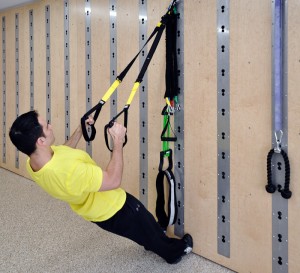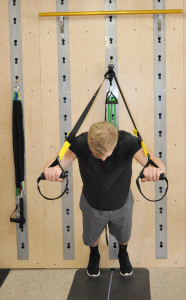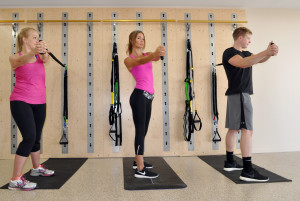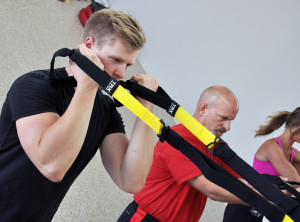Awesome Isometrics On Isawall: Even More Off-The-Wall Exercises
Isawall offers the average person hundreds of exercises that can be performed using any number of attachments. The possibilities on Isawall are huge, and one of the great methods of training on Isawall is the use of Isometrics. Isometrics challenge your body in a way that is different from conventional resistance exercises. So let’s take a look at what isometrics are and how they can be done in Isawall.
What Are Isometrics?
Isometrics are a way of working muscles that are different from conventional resistance training. With an isometric, there is no actual movement going on. The person doing the exercise simply holds a position. Although the muscle is not actively contracting or lengthening, it is still working against the resistance being applied.
Isometrics do not work the muscles in the same way as conventional resistance training. An isometric exercise strengthens the muscles involved at the particular angle being used. In other words if you are holding against resistance at 90 degrees, the muscle will be strengthened at 90 degrees, but not 45 degrees.
Using isometrics in your workouts can be a great way to change up your routine and challenge your muscles in a way that they are not accustomed to. There are dozens of isometric exercises that can be done on Isawall. By using the resistance bands, TRX, and Pullup Revolution, you can challenge your muscles to hold various positions. Very often when observing these kinds of exercises for the first time they look simple and easy. However when enough resistance is applied and enough time elapsed, isometrics can challenge anyone.
Examples Of Isometrics On Isawall
The best isometric exercises are often variations of normal resistance training exercises. The difference of course being the position is held at the angle of choice rather than having constant movement. For example, a great exercise for the core is to do rotational movement with a resistance band. For the isometric variation, simply holding the position at some point in the movement will force the muscles to really work at that particular angle.
Another isometric variation that can be performed on Isawall is with the use of the Pullup Revolution Pro, or Lifeline. This great attachment can assist a person in performing exercises such as pullups and pushups. However it is also a great tool for those looking to do isometrics such as a plank or side bridge. Additionally, users of the Lifeline can engage in isometrics by reaching a certain point in a pullup or pushup, and then stopping and holding that position at some point during the movement. Changes in palm positioning and hand width will alter which muscles are forced to counter the resistance the most.
The TRX is also another great means by which users of Isawall can challenge their body with Isometrics. Of the many exercises that can be done using the TRX, most have an isometric variation that can be employed. Whether you are doing rows, lunges, or curls, the movement can be stopped at any point to challenge the muscles by simply holding the position.
Additional Reasons For Using Isometrics
Isometrics can be a great means of re-strengthening muscles coming off of injuries. Shoulder injuries in particular can benefit from the use of isometrics during the recovery phase. Very often when a person is in the initial stages of recovering from an injury, isometrics are more practical. They are generally safer as well, since there is no active movement at the joint.
Isometrics are practical for most people to do. In fact, in terms of sheer skill, many people will find them easier to do than other forms of more conventional resistance training. Seniors in particular can benefit greatly from doing isometrics on Isawall. Many of the exercises that can be done force the body to pull in multiple muscles in order to hold against the resistance. The exercises on Isawall require the user to utilize various core muscles for most Isometrics.
Isometrics can be particularly challenging when going back and forth between a conventional exercise and the isometric. For example, you may do a set of torso rotation, and in the next set do its isometric counterpart. Going back and forth between conventional resistance training and isometrics can be a great way to challenge and fatigue your muscles.
Isawall was designed to take up as little space as possible while providing the maximum amount of exercises. Isometrics are just some of the hundreds of exercises that can be done on Isawall. Get yours today and make your workouts off the wall!
Paul Owens is a personal trainer in the Cleveland area. He is a Certified Personal Trainer through the National Strength and Conditioning Association, and the National Council on Strength and fitness. He is also a Corrective Exercise Specialist through the National Academy of Sports Medicine. He can be reached at http://www.clevelandpersonaltraining.com










